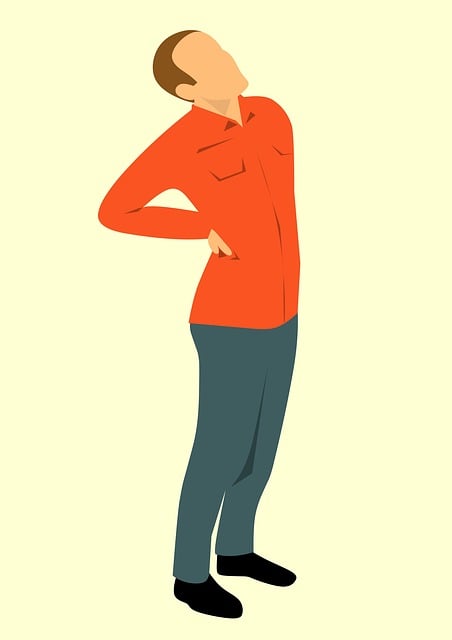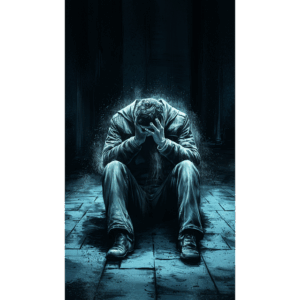Acupuncture, an ancient Chinese practice, offers a safe and effective non-invasive treatment for back pain, sciatica, arthritis, and migraines, providing drug-free relief and improving overall well-being. By targeting specific acupoints with thin needles, acupuncture stimulates natural healing, reduces inflammation, and relieves symptoms without the side effects of traditional medications. This holistic approach gains popularity as a powerful alternative to opioids for chronic pain management, appealing to individuals seeking natural solutions for back and neck conditions.
Tired of relying on medications for chronic pain? Acupuncture offers a drug-free alternative with promising results for alleviating back pain, neck pain, and more. This ancient practice, now recognized by modern science, targets specific points in the body to block pain signals and promote natural healing. In this comprehensive guide, we explore the mechanics of acupuncture, its benefits for various types of pain, safety considerations, and tips for finding a qualified practitioner. Discover if acupuncture for back pain could be your path to relief.
- Understanding Back Pain and Its Impact
- Acupuncture: An Ancient Practice for Modern Times
- How Acupuncture Works to Alleviate Pain
- Benefits of Acupuncture for Various Types of Pain
- The Safety and Efficacy of Acupuncture Therapy
- Finding the Right Acupuncturist and Setting Expectation
Understanding Back Pain and Its Impact

Back pain is a prevalent issue that affects individuals across various demographics, from active young adults to sedentary office workers. It can stem from a multitude of causes, including muscle strains, poor posture, arthritis, or even nerve compression. The impact of chronic back pain extends far beyond physical discomfort, often leading to decreased mobility, insomnia, and emotional distress. This debilitating condition can significantly impair one’s quality of life, making it crucial for people seeking relief to explore effective yet non-invasive treatments.
Acupuncture, an ancient Chinese practice, has gained recognition as a powerful tool in managing various types of pain, including back, neck, and joint pain. Unlike traditional Western medicine’s focus on masking symptoms with pharmaceuticals, acupuncture targets the root causes of pain by stimulating specific points along energy pathways in the body. This holistic approach has shown promising results in treating conditions like sciatica, migraine headaches, and arthritis pain, offering a drug-free alternative for those looking to reclaim their active lifestyles.
Acupuncture: An Ancient Practice for Modern Times

Acupuncture, an ancient practice with roots in traditional Chinese medicine, has evolved to become a popular and effective modern-day solution for managing various health conditions, especially chronic pain. This holistic treatment approach involves inserting thin needles into specific points on the body, known as acupoints, to promote natural healing and restore balance. For individuals seeking drug-free pain relief, acupuncture offers a safe and non-invasive alternative for treating back pain, neck pain, and even conditions like sciatica and migraines.
In today’s world, where overreliance on medications can lead to side effects and concerns about long-term use, acupuncture provides a fresh perspective. It targets not only the symptoms but also the underlying causes of pain, addressing inflammation and promoting self-healing. Many patients find relief from acupuncture for back pain, sciatica acupuncture, and migraine acupuncture, experiencing reduced inflammation and improved overall well-being without the risks associated with prescription drugs.
How Acupuncture Works to Alleviate Pain

Acupuncture works by stimulating specific points on the body, typically using thin, sterile needles, to restore balance and promote natural healing. When a patient experiences chronic or acute pain, such as back pain or neck pain, the body’s natural response is to release endorphins, the body’s own pain-relieving chemicals. Acupuncture can enhance this process by targeting key acupressure points that are connected to the nervous system and associated with pain perception.
The needles used in acupuncture for back pain, sciatica acupuncture, or migraine acupuncture gently manipulate these points, which can help to block pain signals from reaching the brain and decrease inflammation. Unlike some medications that focus on masking symptoms, acupuncture addresses the underlying causes of pain by improving circulation, relaxing muscles, and calming the mind-body connection. This non-opioid pain relief method offers a safe and effective alternative for those seeking long-term solutions for various types of chronic pain conditions.
Benefits of Acupuncture for Various Types of Pain

Acupuncture has gained significant attention as a powerful tool for managing various types of pain, including back pain and neck pain. This ancient Chinese practice involves inserting thin needles at specific points on the body to stimulate natural healing responses. One of its key advantages is its ability to provide drug-free pain relief, making it an attractive alternative for those seeking non-opioid solutions.
For individuals suffering from migraines, acupuncture has shown promise as a treatment option. By targeting specific areas related to migraine symptoms, it can help reduce frequency and intensity. Furthermore, acupuncture’s anti-inflammatory properties make it effective in treating chronic inflammation associated with many types of pain. This natural approach not only offers relief but also empowers individuals to take control of their well-being without relying on medications.
The Safety and Efficacy of Acupuncture Therapy

Acupuncture therapy has gained significant attention as a safe and effective alternative for managing various types of pain, especially back pain and neck pain. This ancient practice involves inserting thin needles into specific points on the body to stimulate natural healing responses. Numerous studies have shown that acupuncture for back pain is an excellent non-opioid pain relief option, offering significant benefits without the risks associated with long-term use of opioids or other medications.
In terms of efficacy, sciatica acupuncture has been particularly effective in treating inflammation and related pain conditions. The needles target acupoints to release endorphins, reduce inflammation, and improve blood flow, providing lasting relief for many patients. As an alternative to traditional medicine, it offers a natural approach to managing chronic pain, making it an appealing choice for individuals seeking drug-free pain management solutions.
Finding the Right Acupuncturist and Setting Expectation

Finding the right acupuncturist is key to achieving optimal results for your acupuncture sessions. It’s important to look for a licensed and certified professional with experience in treating specific pain conditions, such as back pain, neck pain, sciatica acupuncture, or even migraine acupuncture. Many reputable acupuncturists will have their areas of expertise clearly stated on their website or profile. You can also ask for recommendations from friends or family members who have had positive experiences with acupuncture for joint pain therapy.
Setting expectations is another crucial aspect. Acupuncture for back pain, for instance, typically involves inserting thin needles at specific points to stimulate the body’s natural healing response. While it can provide significant relief, results may vary from person to person. Discuss your goals and concerns openly with your acupuncturist. They should be able to give you an idea of what to expect in terms of treatment frequency, potential side effects, and the timeline for seeing improvements in your pain management.
